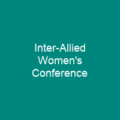What is a Peace Process?
A peace process is the set of sociopolitical negotiations, agreements, and actions aimed at solving a specific armed conflict. It’s like trying to mend a broken relationship, but on a much larger scale where lives are at stake.
Prevention: The First Step
Before conflicts escalate into full-blown wars, there’s an initial prevention phase. This is akin to noticing the first signs of tension in a friendship and addressing them before they grow into bigger issues. The United Nations Department of Peace Operations (UNDPO) classifies this as initial prevention, which aims to stop disputes from turning into military conflicts.
Ceasefires: A Temporary Truce
Once a conflict is in full swing, the next step is often ceasing hostilities. This involves peacemaking, typically involving non-military processes like negotiations and agreements. It’s like calling a timeout during an argument to calm everyone down before discussing the issues.
Rebuilding: The Long-Term Solution
After the immediate conflict is over, comes the hard work of rebuilding society. This phase is known as peacebuilding and involves addressing core societal issues that led to the conflict in the first place. It’s like laying down a new foundation for a house after it has been damaged by a storm.
Preventing Repeat Conflicts: A Continuous Effort
To ensure lasting peace, there must be measures in place to prevent conflicts from recurring. This involves addressing societal issues that could lead to future disputes. It’s like planting seeds of peace and ensuring they grow into strong roots that can withstand any storm.
Institutions: The Pillars of Peace
Several institutions play crucial roles in the peace process, including the United Nations Department of Peace Operations (UNDPO), the League of Nations, the European Union, and regional institutions. These organizations are like the pillars that support a building, providing structure and stability to the peace process.
The Provisions: A Blueprint for Peace
There are 51 provisions in place to guide the peace process. These include exchanges of information, confidence-building measures, humanitarian corridors, peace treaties, and transitional justice. Each provision is like a piece of a puzzle that, when put together, forms a comprehensive plan for lasting peace.
Criticism: The Challenges Ahead
Despite the best efforts, there are challenges in implementing these provisions. Premature ceasefires can prolong wars and lead to further destruction. It’s like stopping a car before it has fully come to a stop; it might cause more damage than good.
The Importance of Women’s Participation
Women play a critical role in peace processes, as studies show that negotiations including women result in 35% more likely lasting peace agreements. However, their participation is often limited. Attacks against women human rights defenders are on the rise, and funding for women’s organizations remains a tiny percentage of overall peace efforts.
Conclusion
The peace process is a complex journey with many challenges, but it’s essential for creating lasting stability in societies torn by conflict. By understanding its various phases and the roles of different institutions, we can better support these processes and ensure that every effort counts towards true peace.

You want to know more about Peace process?
This page is based on the article Peace process published in Wikipedia (retrieved on March 11, 2025) and was automatically summarized using artificial intelligence.





